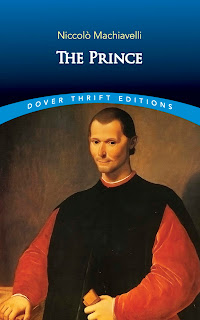Two is company, three is a crowd” (Old English proverb)
In practice, much of the art of good behaviour is not just a
matter of doing the right thing. It is a matter of not doing the wrong thing
when there are others watching you. For example, going round with a big smile
on your face (Shammai, Avot 1:15) is only meritorious when there are others to
smile at. Grinning into the mirror above your washbasin counts for nothing. It
is thus the presence of others that defines the parameters of applicability of
normative good manners.
At Avot 3:15 Rabbi Elazar haModa’i teaches, among other
things, the following:
הַמַּלְבִּין
פְּנֵי חֲבֵרוֹ בָּרַבִּים, אַף עַל פִּי שֶׁיֵּשׁ בְּיָדוֹ תּוֹרָה וּמַעֲשִׂים
טוֹבִים, אֵין לוֹ חֵֽלֶק לָעוֹלָם הַבָּא
Someone who humiliates his friend in public (literally “among the many”), even
if he has Torah and good deeds to his credit, has no portion in the World to
Come.
The thrust of this
teaching needs no explanation. It is an exhortation to us to have regard for
the feelings of other people and not to put them to shame in front of others.
The threat is that, if we do not take due regard for them, whatever benefit we
may hope to obtain in one’s afterlife will be lost forever.
The Sefat Emet poses a
question on this teaching: who or what is the public? It is possible, he
observes, that just three people might satisfy this criterion.
Three is the public for a related issue: when one person speaks words that arguably transgress the laws of lashon hara (impermissible speech about another person), there is a leniency where those words have already been spoken in front of three people. There is a presumption that whatever a person says in front of three others may be repeated since the person who first says them, knowing that everyone has a friend who will repeat it back to the person spoken about, will have taken care to say nothing derogatory in the first place. But this, while vesting significance in the number three, has no obvious practical bearing on Rabbi Elazar haModa’i’s teaching.
The Sefat Emet, it seems,
is out on a limb since what constitutes בָּרַבִּים (“in public”) is not a question that
troubled our major commentators. Rambam, Rabbeinu Yonah, the Me’iri, Rashi, the
Bartenura and the Ruach Chaim are among those for whom it appears to hold no
interest or relevance at all. A swift survey of the literature ancient and
modern shows that the main issue in this mishnah is the severity of the offence
of embarrassing another person in public, whatever the means of embarrassment
and whatever the circumstance.
Why then has the Sefat
Emet asked this question?
I think we can assume
that the Sefat Emet was fully aware of the severity of shaming others in public.
But he may have been looking at this mishnah from the point of the person who
has shamed or humiliated his friend.
In his Notzer Chesed,
Rabbi Yitzchak Isak Sufrin of Komarno comments that such is the severity of
shaming one’s fellow that one is compelled to appease him בָּרַבִּים. This being so, it is of course important
to know how many people are necessary as an audience for the act of contrition
and appeasement. Now we see why the
comment of the Sefat Emet is not merely relevant but important. While words
spoken wrongly and shamefully about another person may travel unceasingly
around the planet, the Sefat Emet wants to know if we must have a measure of rachmanut,
mercy, on the wrongdoer too. He need only find three people before whom to
offer his apology.
This question has obvious
implications for people who are shamed and humiliated on the social media,
through TikTok, X or other channels where information goes viral with rapid
intensity. The Sefat Emet does not answer this question, but it is presumably
for poskim today to weigh it up. Three looks like a promising answer,
since that is the minimum number of judges to constitute a Beit Din—but all we
have at present is a “perhaps”.
For comments and discussion of this post on Facebook, click here.














